Twitter still matters if you expect your business to become an online authority.
If you’re looking at social media from a purely outreach-focused perspective, there’s no getting around the fact that, with over 300 million monthly active users, Twitter has plenty to offer.
Just take a look at some of the recent stats on why Twitter is such a powerful tool for marketers everywhere, courtesy of Hubspot.
Having access to a massive audience that’s distributed among several social media platforms increases the likelihood that your business will end up becoming an online authority. It’s as simple as that.
Beyond the focus on outreach, there’s another great reason to focus on Twitter. By design, Twitter lends itself to audience interaction that’s quick, consistent, and impactful.
This means that you shouldn’t just hope to get random followers. You should end up with targeted, engaged followers.
But let’s not get ahead of ourselves here.
If you want that level of engagement, you’re going to have to work for it.
Fortunately, I’ve already done most of the heavy lifting by putting together this blueprint for you.
This article will walk you through the step-by-step process of building and maintaining an engaging, conversion-driven Twitter account.
In other words, get ready to run circles around your competition.
Below is the list of what we’ll be covering.
I’d recommend reading this from beginning to end (you’ll get the most out of it that way). But if you already know what you need to work on, feel free to skip ahead:
- The evolution of Twitter
- The world according to Twitter
- Branding and the type of content that works on Twitter
- Step 1: Decide the purpose of your account
- Step 2: Design your profile
- Step 3: Build a content strategy
- Step 4: Explore Lists and engage with Twitter communities
The evolution of Twitter
If we really want to understand what makes Twitter such a powerful marketing tool, we need to consider how Twitter became the platform it is today.
If you’ve been a member of the social media marketing community for some time, I don’t have to remind you that Twitter has changed quite a bit over the years.
Of course, not all the changes have been cosmetic. Since its creation in 2006, Twitter has added the retweet function, launched its own photo sharing service, and much more.
Why is all of this important? Because when you consider the development of this platform, one thing becomes clear: this is a decidedly unique social media experience.
On the surface, it’s easy to find similarities between most social media platforms.
Pinterest and Instagram both rely heavily on visual content.
Facebook and Snapchat both have their own version of video and photo content that disappears after a certain amount of time.
In an industry that seems to be leaning more and more in the direction of consolidating services, Twitter sticks out.
That’s because Twitter was built with a different focus in mind.
The world according to Twitter
Stop me if you’ve heard this one before.
Two marketers walk into a bar and try to figure out whether or not they should be creating short-form or long-form content.
One marketer says that short-form content is the best type of content to grab people’s attention and offer the most value in the least amount of time.
The other marketer says that long-form content is the best because it’s more likely to provide meaningful value to users, which is what will keep them coming back for more.
It’s one of the eternal arguments of social. And, while I have my own take on this whole situation, it’s clear that certain platforms want to appeal to one type of content or the other.
To date, Twitter still enforces its 140-character limit.
It’s not a massive leap of faith to assume that the platform focuses on providing short-form content for users.
Which makes perfect sense, once you consider the kind of platform that Twitter is.
Twitter is a platform that revolves around speed.
Sure, most social media platforms are good for keeping up with current events. But Twitter is constantly focused on breaking news.
For example, you can choose any city on the planet and find out what’s trending instantly.
Twitter wants to provide its users with an uncluttered experience, which is something that short-form content does best.
But that still doesn’t answer our question. Should you be creating short-form or long-form content on Twitter?
The answer is…
Branding and the type of content that works on Twitter
You should be making the right type content for your business.
No, seriously. That’s the answer.
I can tell you all about how long-form content is more likely to lead to increased engagement and conversions.
But none of that’s going to matter if your followers don’t respond to your long-form content.
Maybe your content is the exception to the rule. Maybe your community has a unique preference for short-form content.
It doesn’t matter.
What matters is that you’re giving the people what they want.
As long as you’re experiencing consistent growth through your marketing efforts, keep doing right by your audience.
And this is where we start addressing the importance of branding if you want to be successful on social media.
Think of it this way: branding is the path to those targeted followers. You can’t have one without the other.
Platforms like Twitter give business owners the chance to engage in a meaningful conversation with their consumers. Emphasis on the word ‘conversation.’
There’s a productive back-and-forth that occurs when a business understands how to manage its social media profiles.
For one, you as a business owner get to address your audience’s concerns, share in their excitement over industry developments, and essentially get real-time feedback 24/7.
But think about what this does for users. By starting this dialogue, you’ve become more than just a faceless corporation.
With strong branding, your business develops a personality, which then leads to brand loyalty.
Why does brand loyalty matter? It’s what helps turn those targeted followers into paying customers.
Step 1: Decide the purpose of your account
For whatever reason, people tend to ignore the ‘goal creation’ step of most social media marketing strategies.
I have no idea why. I’m guessing it’s because the goals might seem obvious at first glance.
But there’s more to setting goals for your account than just wishing for better engagement.
There’s a method to the madness.
If you’re building a Twitter account from scratch, setting goals accomplishes two things:
- Starting with goals from day one helps you develop the good habit of tracking metrics. Take my word for it: The sooner you start this process, the better.
- Setting goals for your business gives you definitive chunks of time that you can analyze to gain a better understanding of how well a strategy worked.
Even if you’ve been managing your Twitter account for some time, this relaunch is the perfect opportunity to clarify the purpose of your account.
And there are definitely a few issues you’ll need to address before we move any further:
- What kind of account are you running?
- Are you going to start creating short-form content or create long-form content?
- Is the focus on offering entertainment or knowledge?
Once that’s done, we need to create tangible goals. They should be easy to measure and preferably within a deadline.
Here are some examples:
- 50% more traffic to your website in the next 6 months
- 20% increase in sales in the next 4 months
- Posting 3 pieces of original content every week for the next 3 months
You get the idea.
And the best part? You can easily keep track of these goals with tools like Twitter Analytics!
Step 2: Design your profile
Right off the bat, we need to talk about your profile.
There are 5 different aspects of your Twitter profile to focus on.
First, your Twitter @name. Your @name is your unique (and permanent) identifier on Twitter. It’s basically the easiest way for people to find you.
Your @name can be up to 15 characters long and will appear under your business’s name.
Here’s what people will see when they land on your profile.
Next, there’s your profile photo. I doubt I have to tell you how to choose a picture that represents your business well.
The tricky part is making sure it works in small spaces. (It’s going to appear next to each of your Tweets.)
After that, there’s your bio. This 160-character section lets people know exactly what makes your account worth following.
Depending on the tone you’re going for, it can be witty, dry, clever, or earnest. It’s up to you.
Below is what it’ll look like to your visitors.
Once that’s taken care of, it’s time to consider your header image. Think of this as a billboard for your account.
You can change this all the time, which is great for showcasing event photos, featured or upcoming products, or even just some work that you and your team are proud of.
Here’s a quick look at what your visitors will see when they check out your profile.
When it comes to designing your profile, choosing a pinned Tweet can make a huge difference. Pinned Tweets are fixed at the top of your timeline, no matter what you post.
This feature is great when you want to make sure visitors to your profile don’t miss out on an event, product, or any other kind of news you have.
As you can see below, pinned Tweets are a great way to draw attention to the valuable content you’ve put together for your followers.
Step 3: Build a content strategy
Okay, so this next step can be a bit intimidating.
Even if this isn’t your first time creating a content strategy, this process can feel overwhelming at times.
But don’t worry. We’re going to keep things simple, okay?
Twitter content strategies are essentially a balancing act. How do you provide the most value with such a limited amount of space?
The solution is to tackle this problem from three angles: condense, redirect, and stack:
- Condense: You’ve only got 140 characters, but you can fit a ton of value into that. Write tweets that are on point, easy to scan, and sure to resonate with people.
- Redirect: If you’ve created some long-form content on your website, don’t be afraid to redirect your followers there.
- Stack: Sometimes one Tweet just isn’t enough. If you can break down your message into several Tweets, post them one after to other to work around the character limit.
From there, the general principles of high-quality content marketing still apply.
Make sure that you incorporate content curation into your strategy. The speed at which people consume (and expect) content is growing rapidly.
Instead of trying to create a brand new piece of content every time you post, surround your original content with curated content that your audience is sure to love.
Not only does this lighten the load on you, but it actually helps solidify your standing as a trendsetter and online authority. Two birds — one stone.
Below you can see how Kevan Lee, director of marketing at Buffer, integrates content curation into his Twitter marketing strategy.
Step 4: Explore Lists and engage with Twitter communities
Assuming that you’ve followed all the steps above, you might be asking yourself “Okay, well all that’s great for keeping followers, but how do I get those new targeted followers?”
Don’t worry; this section is for you.
To be honest, the structure of this article was no accident. Every step of this process builds on the last one to create a marketing strategy that actually works.
Before you could start attracting targeted followers, you needed to have a defined marketing strategy.
Now that we’ve set the foundation, let’s address the elephant in the room.
To be clear: getting targeted followers on Twitter does not require ads.
It can certainly help, but it’s not a requirement with this approach.
The first thing you’ll need to do is start exploring hashtags.
Most social media platforms use hashtags to some degree, but nowhere is this tool more valuable than on Twitter.
Twitter doesn’t have a defined ‘groups’ section like Facebook, so you’re much more reliant on hashtags to find like-minded users and communities.
You can search for industry terms in the search bar in the top right:
You can also use Lists, which allow you to track industry leaders and interact with other members of the community there.
Let’s say that you wanted to find Lists where people were talking about social media marketing.
Twitter doesn’t have a nifty search feature for Lists, but the solution to this issue is simple enough.
Hop on Google and type in ‘site:twitter.com,’ then the industry that you’re looking for in quotation marks, followed by the word ‘list.’
Here’s an example of what it would look like.
Once you search this, you’ll get access to a list of results that you can immediately start scouting.
To subscribe to the Lists of these industry leaders and influencers, start by looking for the Lists tab at the top of their profiles.
To better understand this process, let’s take a look at Josh Elman’s profile page.
Once you’ve clicked on the tab, you should see a detailed chart of Lists that they’re subscribed to and members of.
Josh’s Awesome Social List revolves around social media marketing, which makes it a great place to connect with relevant users.
From there, the process is actually pretty straightforward.
Subscribe to these Lists, keep track of what’s being posted, and respond accordingly.
Keep track of important hashtags and connect with influencers and other users by offering value however possible.
If you’re looking for an easy way to track hashtags, consider using a tool like Talkwalker.
Not only will you have a better understanding of how hashtags are actually performing on social, but you’ll be able to track the developments of any relevant industry hashtags.
Keep in mind that while all of these steps are an important part of finding and attracting targeted followers, the only way to keep them is by being an active user on Twitter.
Here’s a quick checklist on how to be an effective active user.
- Follow relevant accounts! Don’t just follow the accounts that follow you. You’re looking for targeted people to follow.
- Tweet consistently! Whether you’re Tweeting once per day or 5 times per day, make sure you maintain a consistent presence on Twitter.
- You should be using two hashtags per Tweet to maximize engagement.
- A good rule of thumb for determining the optimal Tweeting time is to just Tweet during the day, according to your time zone. Use Tweriod if you want specific times.
- Do not spam! There’s no easier way to throw away all the credibility you’ve earned.
Speaking of credibility, don’t even think about buying followers.
Aside from being ‘questionable’ at best from an ethical (and legal) perspective, it goes against everything we’re trying to do here to attract targeted followers.
The kind of followers we’re after aren’t going to be impressed by a high follower count. They want value and engagement.
Respond to comments left on your Tweets. Retweet others’ Tweets when it’s relevant as a way to curate content.
Take one look at my profile and you’ll see that I provide tangible value at every turn.
Engage in meaningful conversations with other users!
Whether it’s addressing negative experiences or discussing exciting developments in the industry, you need to show people that there’s a soul behind that username of yours.
If you provide value and raise brand awareness without shamelessly self-promoting, it’s only a matter of time before those users start checking your profile out.
And remember all that groundwork we laid earlier, setting up your account?
Once they realize that you’re actually worth following, it only makes sense that they’ll end up following you.
As if that wasn’t enough, the best part is that these new followers are all from industry specific hashtags and Lists.
Which means that most of your new followers are actually targeted followers.
Conclusion
Honestly, it’s that simple.
The real secrets behind this technique are creating a strong Twitter account, following the marketing fundamentals, and having a social approach to social media.
It’s almost too easy for some business owners to see social media as just another place to shower users with ads in the hope that something sticks.
There’s just one problem with that: That’s not how social media marketing is supposed to work.
The reason social media marketing has put small businesses on the map isn’t that they spent a small fortune on ads.
It’s because people resonated with those businesses’ messages. Their branding worked because it felt personal, and that’s what the modern consumer wants to see from you.
There’ll always be a place for ads on social media. I’m certainly not going tosay anything negative about them because they still work pretty well.
Both marketing tools are useful. But they can only achieve their maximum potential when they’re used together.
It’s up to you to put the social back in social media.
What tactics have you used to find more targeted followers on Twitter? Have you found any success within Lists?




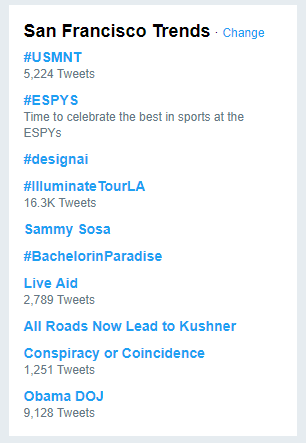
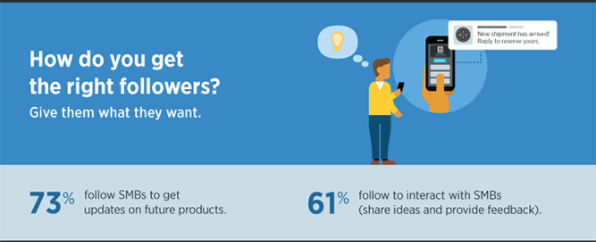
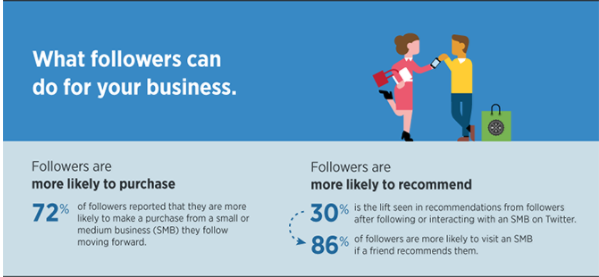
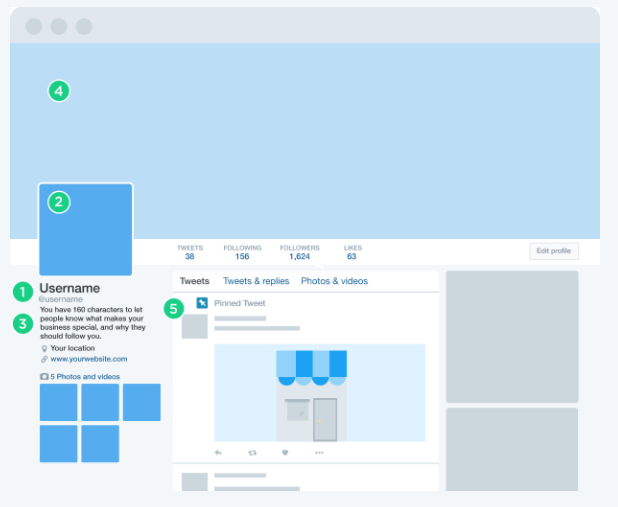







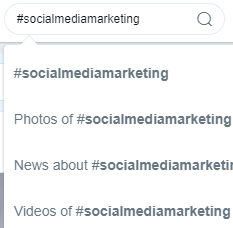

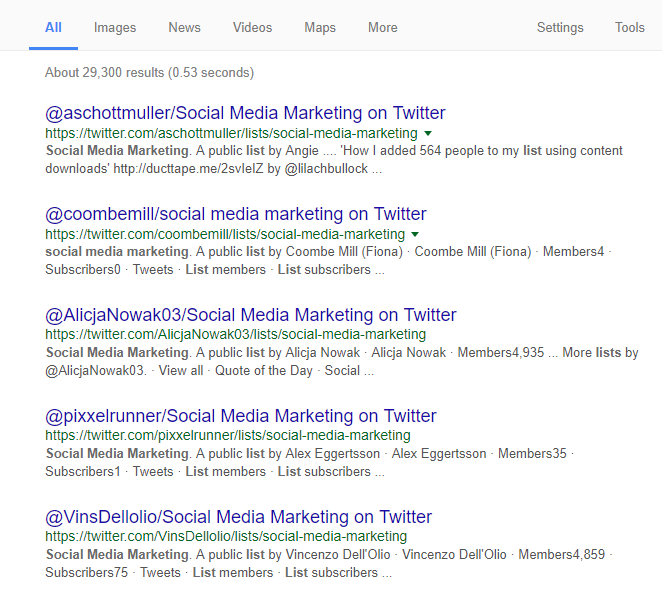



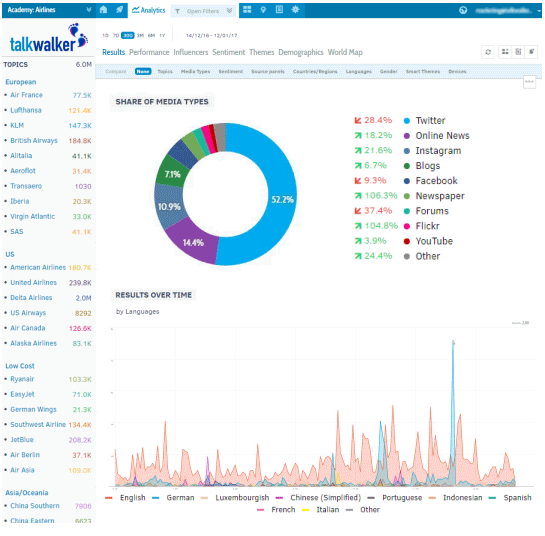

Comments (29)